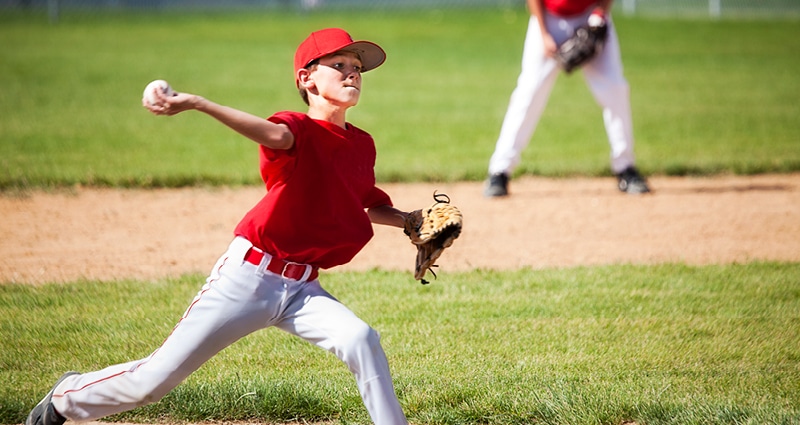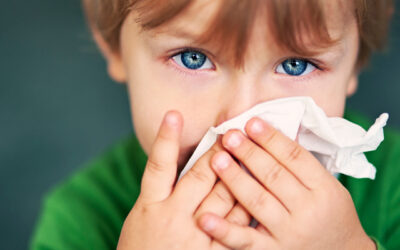As the weather warms and baseball families head back to the diamond, young athletes–especially pitchers–are at risk of injuring their throwing elbow.
Physical therapist Stephanie Wilks, PT, DPT, OCS, catches us up on Little League Elbow, what coaches and parents of young athletes can do to prevent this type of injury, and what the treatment options are.
What is Little League Elbow?
Little League Elbow, also known as medial epicondyle apophysitis, is the irritation and
inflammation of the growth plate along the inner side of the elbow. In young pitchers who are not finished growing, the soft, cartilaginous growth plate of the elbow is the weak link during the throwing motion. During an overhand throw, the inside of the elbow has traction pressure while the outside of the elbow has compression influences.
Frequent and excessive throwing results in repeated traction on the inside of the elbow. This repetition creates a pulling action on the growth plate causing it to become irritated and inflamed over time.
In adults, whose growth plates are closed, the ligament along the inside of the elbow is the weak link in the throwing motion, which can result in the common injury Tommy John Syndrome.
Little League elbow most frequently affects pitchers between 9 and 14 years of age, but it can also impact other players in high-throwing positions, such as shortstop and third base. It can even be seen in other overhead sports, such as water polo, volleyball and football (quarterbacks).
The young athlete will typically complain of pain along the inside of the elbow that occurs with throwing and worsens with each additional throw or inning. This start of pain can often be tied to a recent increase in the number of innings thrown or the number of games pitched by the athlete.
Upon exam, there will be tenderness along the medial epicondyle and there may be some swelling and loss of elbow motion. X-rays are typically normal but may show irritation or widening of the growth plate.
Avoiding Little League Elbow
The best ways to prevent Little League Elbow are to avoid throwing with pain, do not initiate breaking pitches before age 14, and follow the guidelines for pitch count and pitch age provided by literature or your physician.
Young pitchers can greatly reduce their risk of injury by following pitch count guidelines published by Little League Baseball:
- PITCH TYPE – Only allow your child to throw pitches appropriate for their age and physical development. Introducing curve balls, sliders, splitters, etc., too early can cause severe damage to the elbow.
- PITCH COUNTS – Pitch counts should be carefully managed in young athletes. Often, the focus is placed on the number of innings pitched rather than the actual pitches thrown.
- PROPER MECHANICS – Ensure your child has the proper throwing mechanics. Seek advice from a coach or pitching instructor. Improper techniques may place additional stress on the elbow and risk injury.
Little League Elbow Treatment
The most important step in the treatment of Little League Elbow is rest. Ideally, the athlete should undergo a period of complete rest from throwing for a minimum of four to six weeks until the pain is gone.
During this period of rest, the athlete should focus on building overall core/abdominal strength while allowing the arm to rest. Using this time to develop sufficient core strength and body control can help correct throwing mechanics and prevent injury.
Once the athlete is pain-free, a structured throwing program should be initiated over the next four to six weeks, with special attention to the athlete’s throwing mechanics. Any pain during this rehab period should result in rest from the program until the pain goes away.
Typically, it takes about eight to 12 weeks for an injured athlete to return to competitive throwing. The goal is to return to throwing as quickly and as safely as possible, but if the athlete returns to throwing too soon or throws with pain, the injury may worsen and could lead to permanent elbow pain and difficulty with sports.




